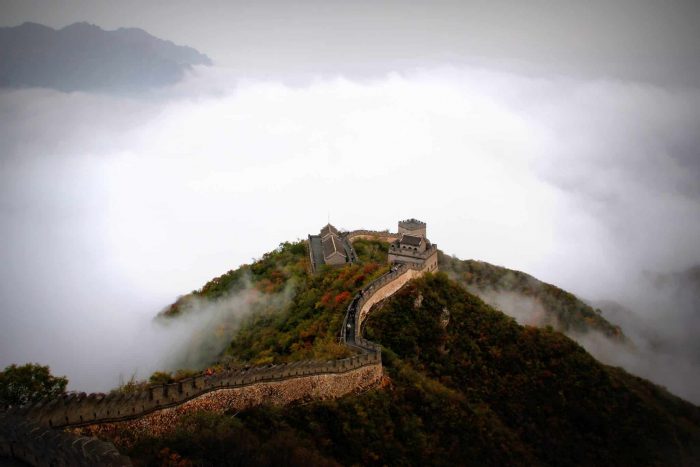The Great Wall of China is an ancient fortification made from cement, rocks, bricks and dirt. It has long been a source of history, mystery and wonder since its construction over 2,300 years ago. It is one of the Seven Wonders of the World and it attracts millions of visitors every year. If you want to learn more, here are 7 interesting facts about the Great Wall of China.
7 Interesting Facts about the Great Wall of China
1. The Great Wall is in North China
The Great Wall stretches across North China from east to west. It starts in the east at Shanhaiguan in Hebei province and ends at Jiayuguan in Gansu province to the west.

2. The Great Wall is the longest man-made structure in the world
With a total length of about 21,196km (13,170 miles), the Great Wall of China is the longest man-made structure in the world.

3. The Great Wall is a fortification
The Great Wall of China is over 2,300 years old and was built over the centuries by six different Chinese dynasties. The First Emperor of China, Qin Shi Huang of the Qin Dynasty was the first person to start building the wall. He built the wall to stop his enemies, the Xiongnu tribes, from invading.

4. The Great Wall of China is a series of structures
The wall isn’t one continuous structure. It consists of smaller pieces, which were all built during different eras in history. The longest section stretches for approximately 3,452km (2,145 miles). It is roughly 9.1 metres (30 feet) wide and 15 metres (49.2 feet) high.

5. The Great Wall is a site of architectural significance
UNESCO designated The Great Wall a World Heritage site in 1987. UNESCO considers it an “outstanding example of the superb military architecture, technology and art of ancient China.” In 2007, the Great Wall was declared one of the Seven Wonders of the World. Every year, more than 10 million people come to the Great Wall of China. This makes it one of the world’s most popular tourist attractions.

6. Sticky rice holds the wall together
Scientists at Zhejiang University in China researched the mortar used for the Great Wall construction. They discovered that the lime and water mortar contained ‘sticky rice’. The amylopectin in the rice, the component that causes the rice to be ‘sticky’ has also aided in the wall’s strength over the years. The Ming dynasty (1368–1644 AD) invented this sticky rice mortar and used it in the construction of their buildings, tombs and pagodas. The sticky rice mortar worked so well that it helped their structures survive earthquakes and the elements.

7. The Great Wall of China goes by many names
The Great Wall looks like a giant dragon lying across the mountains and desert. This is why people call it ‘The Earth Dragon’. The Wall is also called ‘The Purple Frontier’ and ‘The Outer Fortresses’. Chinese historian Sima Qian first named it the ‘Long Wall’. This description appears in his book Records of the Grand Historian, written from 109 BC to 91 BC. The Chinese call it the ‘Ten-Thousand Mile Long Wall’ and the ‘Long Wall of Ten Thousand Li’.

This post have 0 comment
:) :( hihi :-) :D =D :-d ;( ;-( @-) :P :o -_- (o) :p :-? (p) :-s (m) 8-) :-t :-b b-( :-# =p~ $-) (y) (f) x-) (k) (h) cheer lol rock angry @@ :ng pin poop :* :v 100